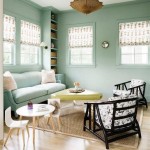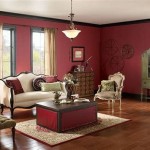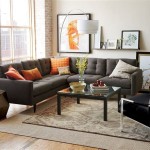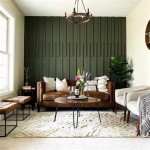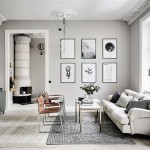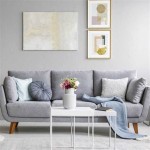Beachy Living Room Decorating Ideas: Creating a Coastal Oasis
Transforming a living room into a beachy haven involves carefully selecting colors, textures, and accessories that evoke the serenity and natural beauty of the coast. This design style aims to replicate the calming atmosphere of the seaside, creating a relaxed and inviting space. The goal is to create a living room that is both aesthetically pleasing and functionally comfortable, reflecting the tranquil spirit of beach living.
Color Palette: Embracing Coastal Hues
The foundation of any beachy living room is its color palette. The choice of colors significantly influences the overall mood and atmosphere of the space. Light, airy, and natural tones are key elements. White is often the dominant color, serving as a blank canvas that reflects light and creates a sense of openness. Variations of white, such as off-white, cream, and ivory, can add subtle depth and warmth without compromising the brightness.
Beyond white, a range of blues, greens, and sandy neutrals are essential. Soft, muted blues, reminiscent of the ocean and sky, are commonly incorporated into walls, furniture upholstery, and accent pieces. Seafoam green, a delicate and calming hue, can be used sparingly to add a touch of natural vibrancy. Sandy beige, tan, and other earth tones contribute warmth and grounding, reflecting the colors of the beach and dunes.
Accent colors can be introduced to add visual interest and prevent the room from feeling monotonous. Coral, a vibrant and cheerful shade, can be used in small doses to inject energy and personality. Touches of turquoise, reminiscent of tropical waters, can add a refreshing and exotic feel. However, it is important to use accent colors judiciously, maintaining the overall light and airy aesthetic of the beachy theme. Consider using a 60-30-10 rule: 60% of the room should be a dominant neutral color, 30% should be a secondary color, and 10% should be an accent color.
Paint finishes also play a role in creating the desired effect. Matte or eggshell finishes are generally preferred for walls, as they provide a soft and diffused light reflection. Semi-gloss or gloss finishes can be used for trim and accents to create subtle contrast and highlight architectural details. Consider using textured paint to mimic the texture of sand or weathered wood, adding depth and dimension to the walls.
Natural Materials and Textures: Bringing the Outdoors In
Incorporating natural materials and textures is crucial for creating an authentic beachy living room. These elements add warmth, character, and a sense of connection to the natural world. Wood, rattan, jute, and linen are all excellent choices for furniture, flooring, and accessories.
Wood furniture, especially pieces made from light-colored or reclaimed wood, is a staple of beachy decor. Distressed finishes, where the paint is slightly chipped or worn, add a rustic and weathered look. Furniture with simple, clean lines complements the relaxed aesthetic. Consider pieces such as a coffee table made from driftwood, a rattan armchair, or a wooden bench with a whitewashed finish.
Rattan and wicker furniture are lightweight, durable, and naturally appealing. They are ideal for chairs, sofas, and side tables. These materials evoke a sense of casual elegance and can be paired with soft cushions and throws for added comfort. Jute rugs, with their natural texture and earthy tones, are perfect for grounding the space and adding warmth underfoot. Sisal rugs are another durable and stylish option.
Linen is a versatile fabric that is ideal for upholstery, curtains, and throw pillows. Its natural texture and breathable qualities make it a comfortable and practical choice for beachy living. Cotton canvas and other natural fabrics can also be used. Consider layering different textures to create depth and visual interest. For example, a linen sofa can be adorned with a jute throw and cotton pillows.
Natural elements can also be incorporated through decorative accessories. Seashells, starfish, and sand dollars can be displayed in glass jars or arranged on shelves. Driftwood branches can be used as decorative accents. Plants, such as palms and succulents, bring a touch of greenery indoors and enhance the connection to nature. Baskets made from natural materials can be used for storage or as decorative accents. Consider using a mix of sizes and shapes to create visual interest.
Accessories and Décor: Emphasizing the Coastal Theme
The careful selection of accessories and décor is essential for completing the beachy living room. These details add personality, character, and a touch of whimsy to the space, further reinforcing the coastal theme. Accessories can include artwork, lighting, textiles, and decorative objects.
Artwork depicting seascapes, marine life, or coastal landscapes is a natural choice for a beachy living room. Paintings, prints, and photographs can be displayed in simple frames that complement the overall aesthetic. Consider artwork with soft colors and textures that evoke the feeling of the ocean and the beach. Nautical maps, vintage posters, and framed shells can also be used to add a touch of maritime history and interest.
Lighting plays a crucial role in creating the desired ambiance. Natural light should be maximized by using sheer curtains or blinds that allow sunlight to filter through. Artificial lighting should be soft and warm, mimicking the glow of the sun. Lamps with woven shades or bases made from natural materials can add a touch of texture. Consider using dimmer switches to adjust the lighting levels and create a more relaxing atmosphere. String lights can be used to add a touch of whimsy and create a festive mood.
Textiles, such as throw pillows and blankets, are essential for adding comfort and visual interest. Choose fabrics with natural textures, such as linen, cotton, and jute. Patterns inspired by the ocean, such as stripes, waves, and coral, can be used sparingly to add a touch of visual interest. Consider using a mix of sizes and shapes to create a layered and inviting look. Throw blankets in soft colors and textures can be draped over sofas and chairs for added warmth and comfort.
Decorative objects can be used to add personality and character to the space. Seashells, starfish, and sand dollars can be displayed in glass jars or arranged on shelves. Driftwood branches can be used as decorative accents. Nautical-themed objects, such as anchors, ropes, and buoys, can be used to add a touch of maritime history. Consider using a mix of sizes and shapes to create visual interest. Avoid cluttering the space with too many accessories; a few carefully chosen pieces can have a greater impact.
Mirrors are a valuable tool for enhancing the sense of space and light in a living room. A large mirror placed strategically can reflect light and create the illusion of a larger room. Mirrors with frames made from driftwood or other natural materials can add a touch of coastal charm. Consider using a gallery wall of smaller mirrors to create a unique and eye-catching focal point.
Ultimately, the key to creating a successful beachy living room is to strike a balance between style and comfort. The space should be both aesthetically pleasing and functionally comfortable, reflecting the relaxed spirit of beach living. By carefully selecting colors, textures, and accessories, it is possible to transform a living room into a tranquil and inviting coastal oasis.

Coastal Living Room Ideas Hgtv

Coastal Living Room Ideas Hgtv

30 Coastal Living Room Design Ideas By Designer Rooms

Modern Coastal Style Living Room And Family Ideas For 2024 Jane At Home

Coastal Living Room Ideas Hgtv

Favorite Spaces Of The Week In 2024 Beach House Living Room Interior Design

Coastal Interiors 11 Modern Decorating Ideas

20 Gorgeous Beach House Decor Ideas Easy Coastal Design

21 Living Rooms That Do Beach Inspired Decor Right Architectural Digest

Coastal Contemporary Living Room Design Tuft Trim


